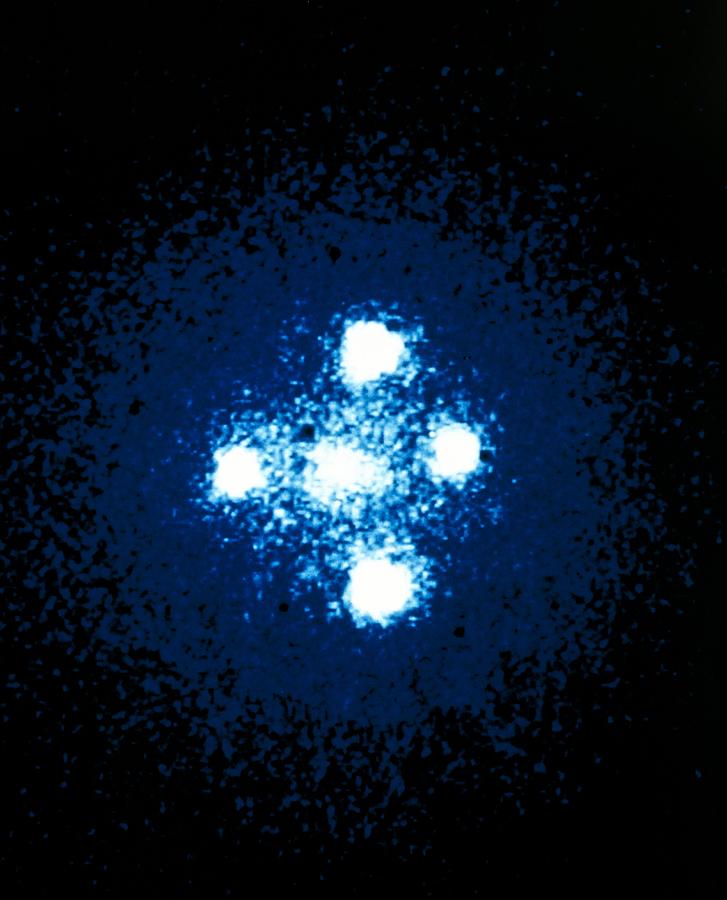Massive objects, such as galaxies, can warp space-time so much that they begin to act as cosmic lenses. These gravitational lenses, as they are known, give rise to some incredible phenomena. The light of distant objects is deformed, magnified, and even multiplied. A famous but rare phenomenon is the Einstein Cross, a quasar being lensed in a way that four images of it appear. Only 50 of these Einstein Crosses were previously known, and new research has now added 12 more to the collection.
This dramatic increase of 25 percent in one go is all thanks to the observations conducted by the European Space Agency’s Gaia Satellite. The primary mission of this observatory is to map the stars in the Milky Way like never before – but astronomers are very thrifty when it comes to observations, and were able to utilize the incredible catalog to find these very distant quasars. The discovery of these new lensed quasars is accepted for publication in The Astrophysical Journal, and a preprint is available on arXiv.
"Finding new ones is difficult, because we have no clue where to search for them exactly. It requires high spatial resolution imaging just to locate candidates," co-author Francois Mignard of the University of Côte d'Azur in France, said in a statement.

The first double-lensed quasar was discovered in 1979, and the first quadruple one in 1985. To overcome the difficulties in finding these objects, the Gaia Gravitational Lenses working group (GraL) used a machine-learning algorithm to sift through the Gaia data and find candidate objects that look – at least to the computer – like Einstein crosses.
"Then we needed to confirm that the four closely packed images were not a pure chance alignment of four independent sources, but really four images of a single, distant source, lensed by an intervening galaxy," explained team member Christine Ducourant of the University of Bordeaux in France.
This confirmation was possible thanks to the measurements from the NASA Wide-field Infrared Survey Explorer (WISE), which gave enough data to confirm if the multiple images all come from the same objects or not.
Einstein crosses, and gravitational lenses in general, are not just beautiful quirks of the universe. They are also a fantastic tool that can be employed to study elusive phenomena as well as mysterious substances such as dark energy and dark matter.
As light from a single distant object is bent around a foreground galaxy, it takes different paths – some longer than others. This, for example, allowed astronomers to predict for the first time when a supernova was going to go off a few years ago. The trick was knowing that the supernova had already exploded in one of the images of the galaxy, so they knew it would eventually appear in the others too.
So if something affects space-time, it will affect these images slightly differently. Understanding these differences opens a door to understanding these universal mysteries.
From the full data release of Gaia, coming later this year, the team expects to find hundreds of these Einstein crosses.
 1 New Concepts in Science*
1 New Concepts in Science*


